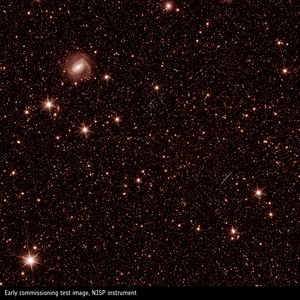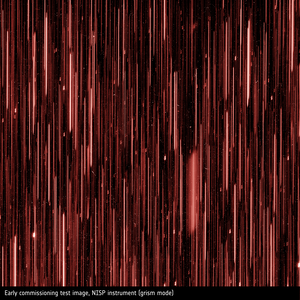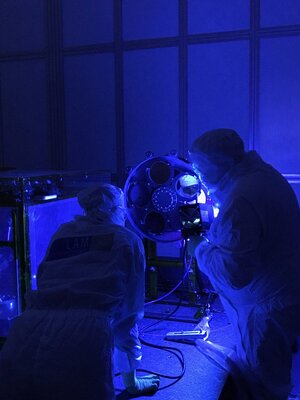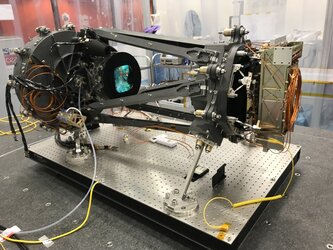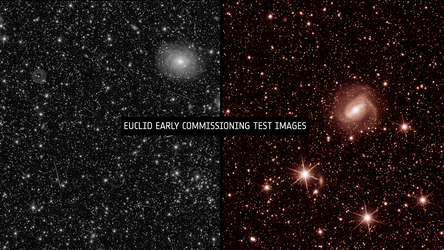
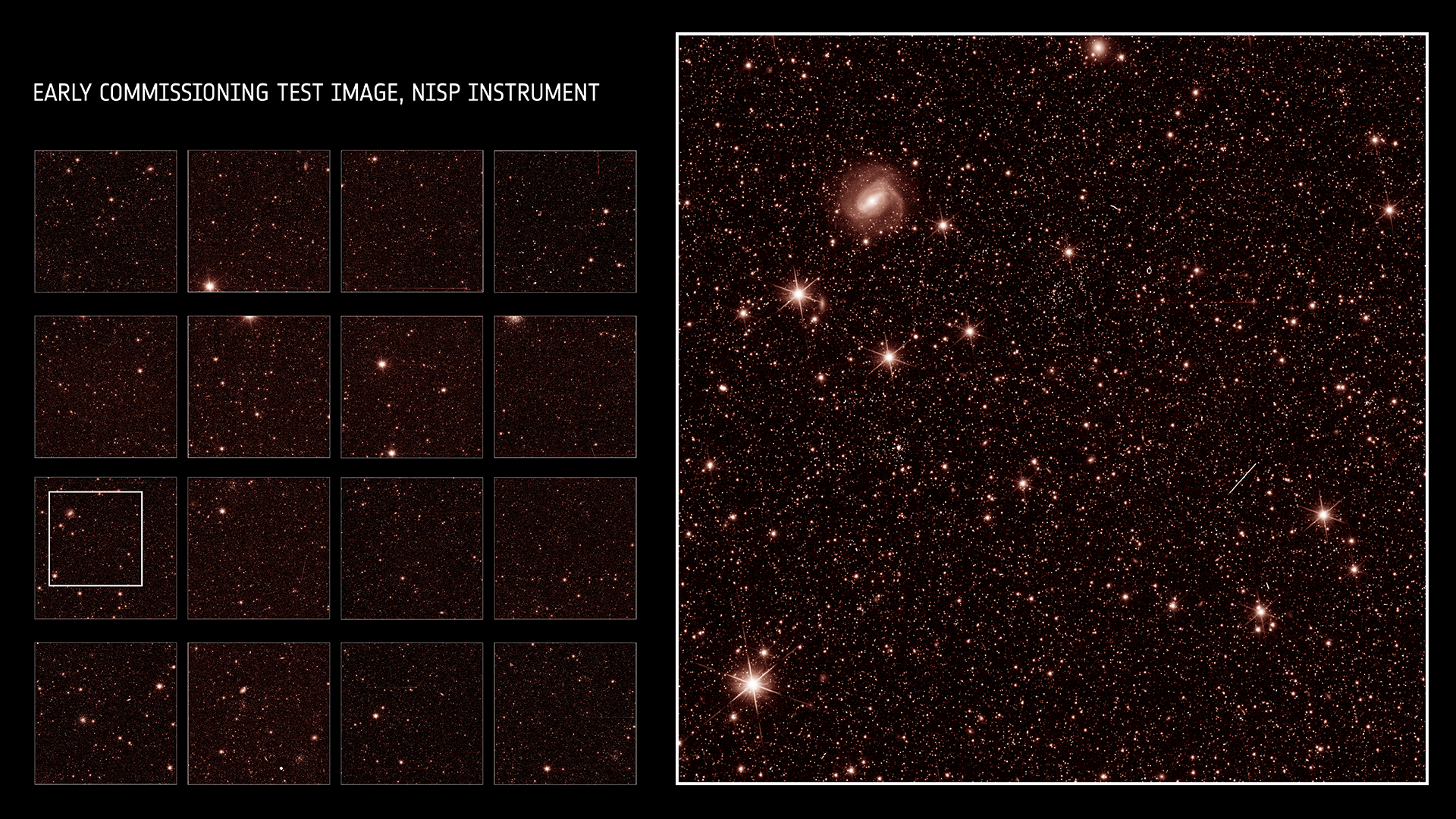
Early commissioning test image – NISP instrument
Euclid’s Near-Infrared Spectrometer and Photometer (NISP) instrument is dedicated to measuring the amount of light that galaxies emit at each wavelength. It will image the sky in infrared light (900–2000 nm) to measure the brightness and intensity of light. This image was taken during commissioning of Euclid to check that the focused instrument worked as expected.
This is a raw image taken using NISP’s ‘Y’ filter. Because it is largely unprocessed, some unwanted artefacts remain – for example the cosmic rays that shoot straight across. The Euclid Consortium will ultimately turn the longer-exposed survey observations into science-ready images that are artefact-free, more detailed, and razor sharp.
The image on the left shows the full NISP field of view, with the zoom-in on the right (4% of NISP’s full field of view) demonstrating the extraordinary level of detail that NISP is already achieving. We see spiral and elliptical galaxies, nearby and distant stars, star clusters, and much more. But the area of sky that it covers is actually only about a quarter of the width and height of the full Moon.
Euclid’s telescope collected light for 100 seconds to enable NISP to create this image. During nominal operation, it is expected to collect light for roughly five times longer, unveiling many more distant galaxies.
Before it reaches the detector, NISP sends incoming light through either a photometry filter or a spectrometry grism. In this image, the light from Euclid’s telescope has passed through the photometry filter.

